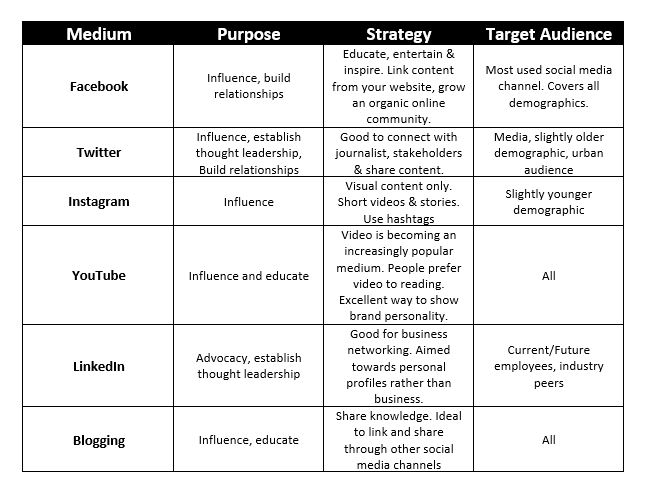
With three-quarters of adults using some form of social media, it has become an increasingly important and non-negotiable way for small businesses to communicate with customers and clients.
Social media is one of the best ways to connect with your current customers, while building opportunities with potential new customers. In fact, businesses of any size can reach new markets, build brand awareness and bring in new customers through social media.
Communication is two-way, and social media allows customers to interact directly with a business through comments, likes, reviews and more.
A snapshot
- As of January 2023, there were 21.30 million social media users in Australia.
- The number of social media users in Australia was equivalent to 81.0 per cent of the population
Of the 5 hours and 51 minutes using the internet, time spent on social media has increased to 2 hours and 4 minutes, which is a signal of how entrenched it is in our daily life.
With our time spent of social media increasing, the popularity of TikTok continues to grow exponentially. TikTok was the second most downloaded app in Australia in 2022, and time spent on the app increased by 6 hours and 12 minutes per month to 29 hours and 36 minutes per user, per month. This compares to Facebook, the second most popular social media platform, which recorded an average user time of 17 hours and 48 minutes per month.
In conclusion
The growth in social media users – mobile users, in particular – means there’s never been a better time to reach Australians through digital.
Source: We Are Social
LATEST NEWS
The Benefits of using social media
Social media allows small businesses to connect with their customers online and easily build connections with communities and individuals. Current and potential customers will have more respect and be more likely to use your services if you have good social media practice and respond to questions in a timely manner.
Another benefit of using social media, is that it allows small businesses to advertise in a costly manner. Although their is options to pay for advertising on all social media channels, the platform itself is free and by simply making a ‘post’ you are reaching your audience and facilitating growth and awareness. If you choose to pay for advertising you can set your own budget and can turn the advertising off at any point.
When used correctly, social media can help you increase awareness of your products/services, demonstrate the value of doing business with you, attract new customers, create a loyal online community and help you create a ‘voice’ for your business.
Small businesses should implement the following tips to use social media correctly.
- Decide which platforms are right for your business
Consider the type of content you’d like to share and the audience you’d like to reach as well as the advertising options you’d like to trial. Facebook has quite advanced advertising options which allows you to target certain areas as well as narrow down audiences based on their interests, location and more. As Facebook owns Instagram, their targeted advertising is also available on this platform. - Set social media goals and objectives
When creating goals its important to remember the SMART framework:
– Specific: Be clear. Does “increase engagement” mean you want 100 new followers or 1,000? Making your social media goals specific helps you track progress and measure success.
– Measurable: Every goal needs some kind of metric. “Improve customer service” is a great concept, but it’s not a goal unless you have a way to measure that improvement.
– Attainable: Your social media goals should absolutely require you to stretch, but they should be within reach if you put in the required work.
– Relevant: This is the piece that ties your goal-setting back to larger business objectives. If your goal involves increasing Facebook likes, for example, make sure you understand how that will benefit the business.
– Timely: Deadlines keep everyone accountable. Include a timeframe for completion of your goal so you know when to check in on your success. You might also want to include some milestones along the way for incremental check-ins. - Research your competition
Researching your competition is a fantastic idea and can give you an overview of what to do and what not to do for your social media. While you don’t want to copy them, learning from what others have done is a great way to reduce your learning curve. - Learn more about your audience/target market
One reason using social media is so effective for business is that you can micro-target your audience if paying for paid advertising. However to do this you need to understand the audience you currently have, and the audience you want to reach. Consider things like location, demographic, age and behaviours. - Work on building relationships
Social media is great for building a community, but its also a fantastic tool to build new relationships and expand your audience. Work on having engaging, quality content. Quantity is also a big thing. It’s important not to post too little or too often as both will likely lose you followers. - Create a social media content calendar
Creating a content calendar for your social media accounts will keep you accountable whilst ensuring you post the right content to the right social channels at the right time. - Share unique and compelling content
Try starting with the 80-20 rule. Use 80% of your content to inform, educate or entertain and only 20% to promote your brand and sell your products. - Focus on quality over quantity
Social media content is available for everybody to see, therefore it’s crucial to share quality content that is delivered in a timely and consistent manner and not oversaturate your customers feed. - Monitor and respond to social media questions in a timely manner
Social media allows for people to interact with you through a multitude of ways including ‘commenting’, ‘liking’, ‘messaging’, ‘reviewing/rating’ and sharing. When people message, comment or contact you asking a question, its crucial that you respond to these queries in a timely and professional manner. Its also very good practice to engage with people interacting you and respond to general comments as well as reviews regardless of whether they are positive or negative. - Consider scheduling your posts
Once you have established a content schedule you may want to consider scheduling your posts, which can be done on Facebook and Twitter. By scheduling your post you will be able to dedicate a block of time per day or per week to create your social content. This is much more effective than letting social posting take you away from your other daily tasks.
Still not sure you’re ready for social media?
There is always going to be some hesitation when starting something new and it’s normal to have concerns and thoughts like ‘what if I make a mistake’ or ‘what if we get a bad review’.
1. I might make a mistake
Believe it or not, but everyone has made a mistake on social media. Mistakes are inevitable, the important part of the mistake is how you manage it and how you learn from it.
2. People might say bad things about us
It’s important to remember that if people want to say negative things about your business they will, all social media does, is give you the opportunity to address these issues head on.
If you receive negative feedback there are a few things you can do:
- Do not immediately respond. It can be difficult not to take negative feedback personally, and leaving a response led by emotions can do more harm than good.
- In saying that, it’s important that you ALWAYS RESPOND, no matter how busy you are.
- When responding:
– Restate the complaint
– Don’t make excuses
– Apologise if warranted
– Resolve the problem
– Give the customer the opportunity to contact the manager/owner directly to discuss/resolve the complaint.
Trolling, is different to negative feedback and is defined by Wikipedia as:
“Someone who posts inflammatory, extraneous, or off-topic messages in an online community, such as a forum, chat room, or blog, with the primary intent of provoking readers into an emotional response or of otherwise disrupting normal on-topic discussion”.
If you are targeted by trolls there are a few things you should keep in mind:
- DO NOT RESPOND. By replying you are feeding the trolls and giving them what they want.
- If you do respond you will likely make the situation much worse.
- Block and delete any troll comments that have no relation to your business practices.
3. Resource Intensive
There’s no doubt that social media can be resource intensive. Although the platforms are free to use, there is certainly a cost on time for the person in charge of managing the platforms.
The key to using social media wisely, is to put your focus where your customers are. Research your customers and find out their social media channel of choice. This, paired with a strong social media strategy will help you effectively reach your customers.
HOW TO IDENTIFY THE RIGHT SOCIAL MEDIA CHANNELS FOR YOUR BUSINESS

Digital Planning
Digital marketing can include a lot of elements. Social media, SEO, website, EDM, online advertising and more. It can be quite overwhelming and it’s common for small businesses to do things in bits and pieces with no real plan and strategy. Overall this isn’t helpful and may cause more harm than good. Online Digital Planning is an important and often underutilised tool when beginning, updating or reviewing digital opportunities for your small business. It provides a business with a rational and reasonable process to following, and helps you focus on your core values and core mission.
For online digital planning to be successful, it’s important that you are able to implement strategic thinking and strategic planning and help you take the right decisions to make a company successful online.
How to build an Online Digital Plan
A well thought out online digital plan is an essential tool for small businesses and should include the following key sections:
1. Goals
Consider what goals you want to achieve. Your goals should be smart, specific, measurable, realistic and time based.
2. Target Audience
It’s important you are clear on your target audience as this impacts what kind of content you publish/promote. Consider region and demographics.
3. Digital Landscape
At the heart of your digital landscape should be your website. Surrounding this are other elements like social media and digital advertising which drives traffic to your website, or takes content from your website to share.
4. An Action Plan
A simplified action plan sets out who does what and when, what and how content is created, where and when it is posted. Scheduling activities and time to implement your action plan is a great way to manage this.
5. Measurements and metrics
It’s important to be able to measure your success and you should regularly report on interaction, engagement, traffic and more.
By successfully planning your online digital marketing strategy you ensure your goals are clear and you are putting the right technology and processes in place to support these goals. A digital strategy aligns your online activities with your business goals and will help you stay on track in this constantly changing environment.
Access the below templates and guides for more information:
Business One Page Marketing Plans (Small Trends)
Small Trends Business has provided multiple one-page marketing plan templates for your business to use as a guide.
Digital Marketing tips for the Automotive Industry (Smart Insights)
Check this out for digital marketing tips relating specifically to the automotive industry.
Check out the Small Business Digital Resources page for more information.
